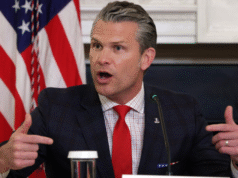At least 15 million Nigerians are at risk of flood disasters in 2025, Vice President Kashim Shettima has disclosed.
He made the disclosure at the commencement of a one-day Validation Workshop on the Anticipatory Action Framework for Nigeria held at the National Counter Terrorism Centre in the Office of the National Security Adviser Abuja on Wednesday.
The Vice President, however, said the Federal Government is taking a proactive approach as against a reactive approach to forestall the disaster.
He emphasized the need for collaboration among all the agencies of government at the states and Federal Government level to tackle floods and other disasters in the country.
Some of Maiduguri communities submerged in flood following a leak in the Alau Dam in 2024.
VP Shettima decried that Nigeria loses 5 per cent of its Gross Domestic Product (GDP) to floods.
However, he disclosed that President Bola Tinubu has approved the sum of N15 billion to be released for emergency responses.
The Vice President, who also condemned the recent heinous attacks in Plateau state, expressed the sympathy of President Bola Tinubu to the affected families.
He, however, advocated a non-kinetic approach to tackling the security challenges on the Plateau and North-East.
According to him, “There can never be a military solution to the crisis in Plateau, North-East.”
Last week, the Federal Government predicted heavy rains and floods in 30 states and the Federal Capital Territory (FCT), Abuja.
The high-flood risk states are: Abia, Adamawa, Akwa Ibom, Anambra, Bauchi, Bayelsa, Benue, Borno, Cross-River, Delta, Ebonyi, Edo, Gombe, Imo, Jigawa, Kebbi, Kogi, Kwara, Lagos, Nasarawa, Niger, Ogun, Ondo, Osun, Oyo, Rivers, Sokoto, Taraba, Yobe, Zamfara and the Federal Capital Territory.
The Minister of Water Resources and Sanitation, Joseph Utsev, said coastal and riverine flooding would be experienced in some parts of the South-South geopolitical zone of the country due to a rise in sea level.
Among these states are Bayelsa, Cross River, Delta, and Rivers while Akwa-Ibom and Edo fall under the high-flood risk states.



